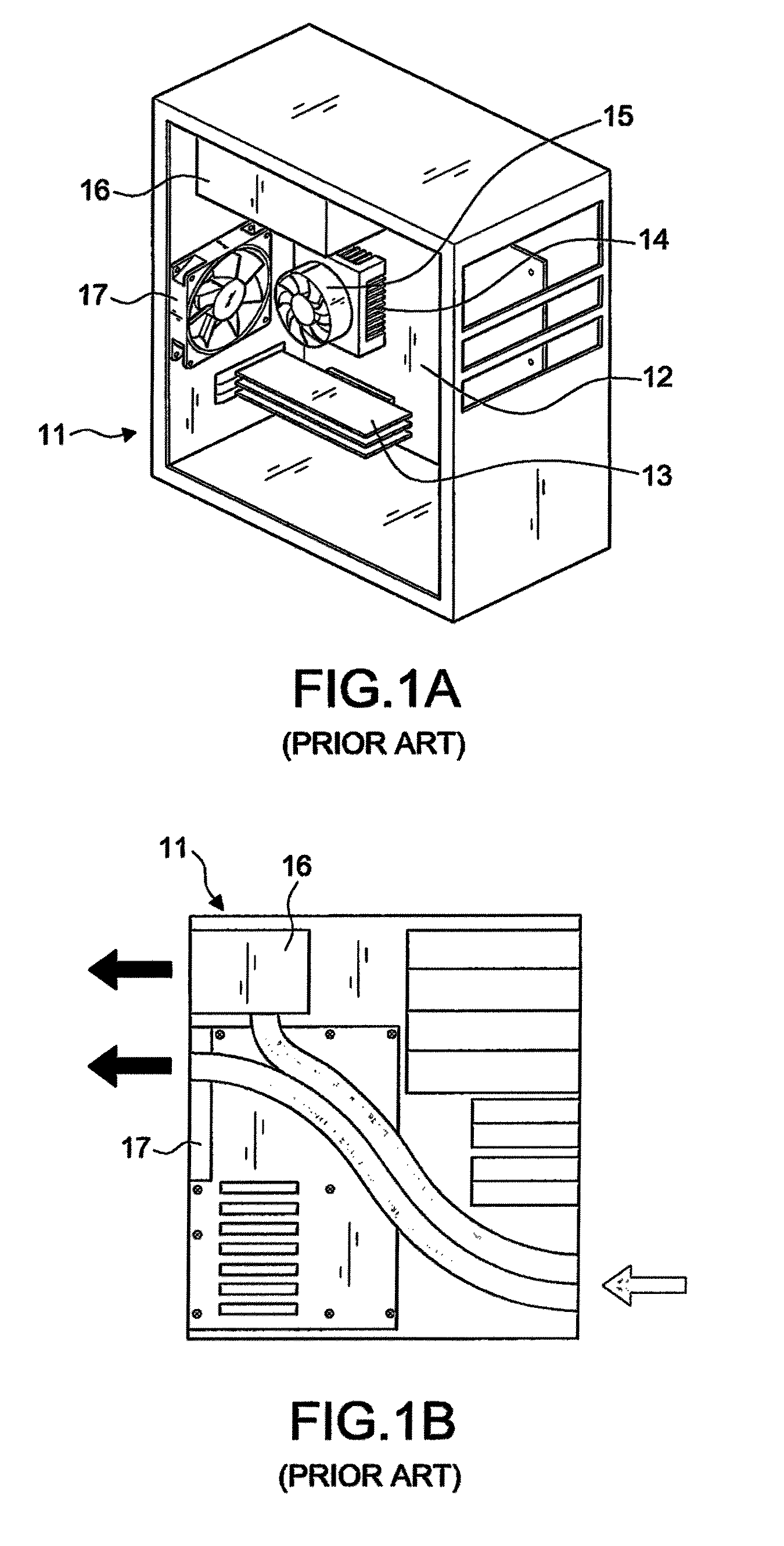Tower computer system
a computer system and tower technology, applied in the direction of cooling/ventilation/heating modifications, electrical apparatus casings/cabinets/drawers, instruments, etc., can solve the problems of poor heat dissipation effect, inability to improve, and power consumption equivalent to the performance capability of the same product, so as to improve the convenience of installation, reduce the length of the chassis, and increase the load carrying capacity of the chassis
- Summary
- Abstract
- Description
- Claims
- Application Information
AI Technical Summary
Benefits of technology
Problems solved by technology
Method used
Image
Examples
Embodiment Construction
[0054]With reference to FIGS. 9A, 9B and 9C for a tower computer system 20 of the present invention, the tower computer system 20 comprises the following elements:
[0055]A tower chassis 30 is a U-shaped body composed of a bottom 31, a front rack 32, and a rear rack 33, and integrally formed or connected with each aforementioned component depending on needs, wherein the difference of the tower chassis 30 and a conventional tower chassis resides on that no frame is in the way on both left and right sides of the chassis to provide an opening form for installation, and the total height H of the tower chassis 30 is greater than the width W of the front side of the tower chassis 30 without exceeding 2.1 times of the width W, that is, 2.1 W≧H>W, and the length L does not exceed 2.5 times of the width W, so as to maintain the best position of the center of gravity of the tower case.
[0056]A mounting assembly 34 is installed at a middle section of the widthwise surface W of the tower chassis 3...
PUM
 Login to View More
Login to View More Abstract
Description
Claims
Application Information
 Login to View More
Login to View More - R&D
- Intellectual Property
- Life Sciences
- Materials
- Tech Scout
- Unparalleled Data Quality
- Higher Quality Content
- 60% Fewer Hallucinations
Browse by: Latest US Patents, China's latest patents, Technical Efficacy Thesaurus, Application Domain, Technology Topic, Popular Technical Reports.
© 2025 PatSnap. All rights reserved.Legal|Privacy policy|Modern Slavery Act Transparency Statement|Sitemap|About US| Contact US: help@patsnap.com



